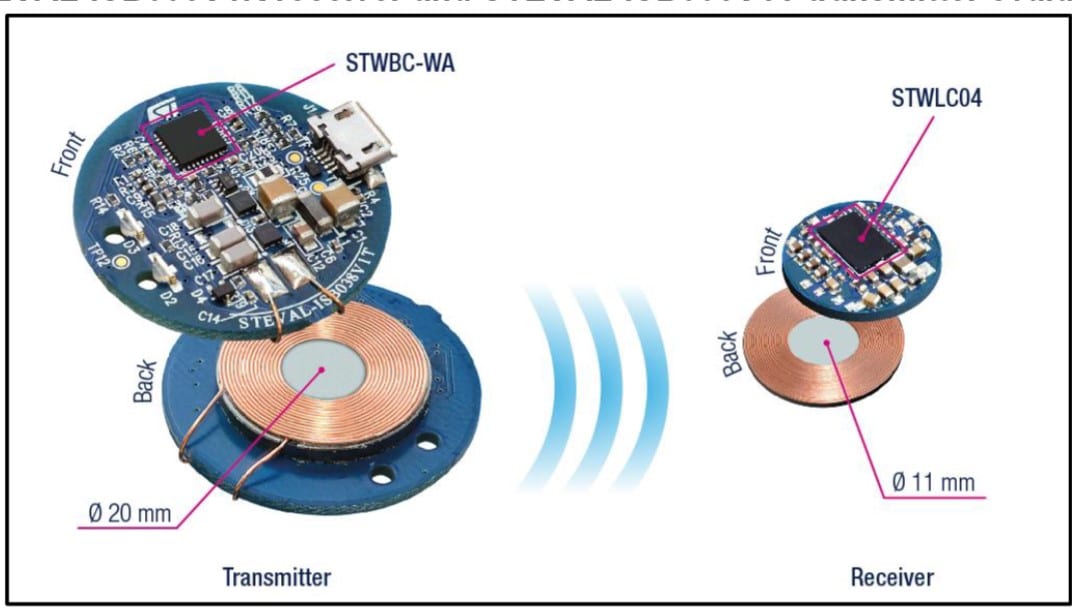The reference design of a wireless charger is specifically proposed for wearable devices such as smartwatches, healthcare devices, Internet of Things (IoT) sensors, etc.

A wireless battery charging system transfers power through electromagnetic induction between a transmitter (Tx) pad or dongle and a receiver (Rx) device. Single- or multiple-coil wireless chargers are increasingly being utilized in various settings such as airports, cafes, supermarkets, and factories. Wireless chargers offer several advantages, including increased spatial freedom, resistance to water and dust, and the ability to function without physical contact. They are commonly used for charging applications like smartphones, watches, robot cleaners, and various industrial tools. STMicroelectronics have launched a wireless battery charger reference design tailored explicitly for compact battery-operated devices like wearable gear, smartwatches, Internet of Things (IoT) sensors, and healthcare devices to simplify the design process.
The design is specifically optimized for efficient 1-watt wireless power transfer, employing a half-bridge topology on the transmitter side and featuring compact 11 mm and 20 mm coils on the receiver and transmitter sides, respectively. If higher power transfers of up to 3 watts are desired, the design can be easily modified by utilizing larger coils and a full-bridge configuration on the transmitter. With the wireless battery charger reference design, one can benefit from a cost-effective half-bridge topology for wireless charging. Furthermore, the transmitter features a powerful software Application Programming Interface (API) for customization. One can conveniently connect external peripherals or devices, such as sensors, to the design through the on-chip Inter-Integrated Circuit (I2C) and universal asynchronous receiver-transmitter (UART) ports. The design is specifically designed to facilitate a 1-watt power transfer using the Qi protocol, and it incorporates both digital and precise analog control loops to ensure stable and reliable operation.
The design features an I²C interface, providing users with extensive customization options to configure various settings according to their specific requirements. Moreover, the embedded non-volatile memory allows for the convenient storage and retrieval of these customized settings, enhancing accessibility and ease of use. The reference design adheres to the Qi 1.0 standard and operates with disabled Foreign Object Detection (FOD) due to its low output power. The system ensures stable performance even in the presence of foreign objects or when transmitters and receivers are moved. The design prioritizes safety, ensuring the well-being of humans and other nearby devices. The wireless power transfer technologies offer high integration capabilities, enabling the creation of compact and cost-effective designs with faster time-to-market.
This reference design has been tested by STMicroelectronics. It comes with a Bill of Material (BOM), schematics, Printed circuit board (PCB) layout, etc. You can find additional data about the reference design on the company’s website. To read more about this reference design, click here.






